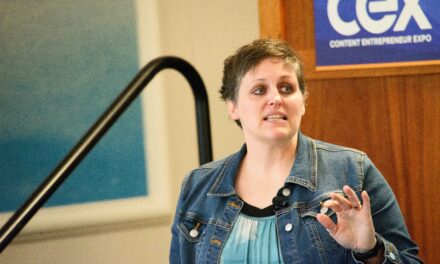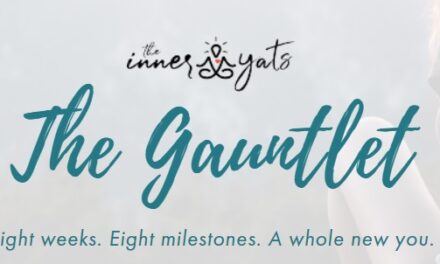
APRIL 27, 2021
full tilt
PR is Sexy Back for Content
|
|
What’s the news?
Two things are converging:
- Exponential growth in the content creation industry ($38.2 billion globally by 2030)
- 4M+ people launched businesses (Q3 ’20 – Q1 ’21). That’s almost double the previous three quarters.
What do those two things indicate?
Though the research doesn’t directly connect the two, both stats indicate the potential for content entrepreneurship to grow significantly in the next few years.
That’s good news, right?
Yes, it is. But there’s another stat to know: two out of 10 startups (all industries) fail in the first year, according to Failory’s Startup Failure Rate: Ultimate Report 2021.
While the reasons vary, the study found 22% said marketing was a contributor to that failure.
And so?
Entrepreneurs often are eager to create their product, but they aren’t as excited about what it takes to promote their business. And that can mean disaster.
The Tilt Talk and Advice
Isn’t creating great content enough?
No, it isn’t. You must still get attention for your content brand. And that requires deliberate external outreach.
How should content entrepreneurs promote themselves?
Think public relations – “a strategic communication process that builds mutually beneficial relationships between organizations and their publics.”
It’s a marketing-adjacent tactic that you, as a content creator, are primed to do: Create content (or content ideas) that resonate with a target audience. It also can be done on limited resources.
How does PR help?
You can reach people interested in your content who won’t discover you through word of mouth or social media algorithms. You also elevate your social proof and credibility with brands.
Any other benefits?
SEO. Google sees external links as validation of valuable sites.
Should you send a press release?
Unless you have big, timely news, a press release likely won’t get any traction with media. However, you may find SEO value by distributing a press release (with links) through an online wire service.
How should a content entrepreneur do PR?
Pick two to three of the most realistic or low-hanging fruit (media, niche sites, influencers, etc.). Customize your pitch for the recipient. Grab their attention. Get to the point quickly. Give them facts and figures. And make it easy for them to contact you.
What should you do with the coverage?
Your work isn’t done when your story, interview, or mention is published. Respond to their audiences who comment or ask questions. Share the content links on your social channels. But don’t go overboard in self-promotion.
– Ann Gynn
To learn more about how public relations can help your content business and how to execute it, read the longer story.
How a Facebook Page Led to a Million-Dollar Media Company
|
|
Entrepreneurs: Adam Barrie and Lee Wilcox
Biz: On the Tools
Tilt: Funny “on-site” videos for builders and tradespeople
Channel: Facebook Followers: 4.3M
Time to First Dollar: 6 months
Time to Profitability: 18 months
2021 Revenue Estimate: $9M (£7M)
Rev Streams: Merch, brand partnerships, social media publishing agency
Our Favorite Actionable Advice
- Keep your eyes open: Their first product was an app. But they realized the real value was the audience they developed through their content marketing.
- Do it better: Brands were willing to pay to access their audience, but their content was boring. On the Tools expanded their brand deals by creating the content themselves (and it resonated far better with their audience.)
- Embrace the power of one: Though tempted to be on multiple platforms, they stuck to Facebook for the first years and focused on a single audience.
Some of the Story:
Adam Barrie and Lee Wilcox went into business to create an app to connect tradespeople to jobs in the United Kingdom.
But a funny thing happened. They wanted to build an audience to whom they could market the app. Instead, they found a content business, a Facebook page called On the Tools filled with curated videos of pranks, fails, jokes, and other humorous videos happening on worksites that attracted the tradespeople audience.
Within three months, the account hit 250K followers. “It was like a pub for sharing funny stories, and (tradespeople) loved it. It is their community; they built it. We are just operating it for them,” Adam says.
Seven years later, they’ve built the largest digital community for construction workers in the UK. They’ve expanded to other platforms: Instagram (581K), Twitter (33.7K), YouTube (66K), and most recently, TikTok (572.6K). And they’ve turned their success into a social media publisher called Electric House.
– Joe Pulizzi
All the Story: To learn more about Adam Barrie and Lee Wilcox, the content entrepreneurs, and On the Tools, the content business, check out the longer story.
Know a content creator who’s going full tilt? DM us or email ann@thetilt.com.
quick talk
Caught on … Twitter
things to know
Money
-
Readers top advertisers: More content publishers – video games, podcasts, magazines, etc. – see reader revenue (i.e., paywalls) as better than ad revenue. Apple’s new podcast subscription launch is just one more indicator. (Publisher Insider)
Our take: The changing business model can bring more opportunities for content entrepreneurs, but look at the fine print before making any commitment. You do not just agree to reap the revenue; you agree to how the content partnership works in the long term. -
Touch on topics: Facebook is testing letting video advertisers target topics, not just audiences on Facebook and Instagram. The initial group includes over 20 topics and 700 subtopics. Video topics will be classified by machine-learning tech. (Yahoo Finance)
Our take: Since creators can earn a share of that in-stream ad revenue, it’s worth monitoring the topics as Facebook discloses them to see if any jive with your content direction. Then, figure out whether to update your Facebook and Instagram strategy. -
More dollars for paid content/influencers: Marketers say 20% of digital ad budgets are going into branded content and influencer marketing this year. That’s the largest portion of what they’re spending. (Advertiser Perceptions survey, Marketing Dive)
Our take: Include brand partnership contact info on your website and social bios. Create a page on your site detailing why a partnership with you makes sense for brands (and remember, they like to know numbers.)
Audiences
-
Start the relationship right: Welcome new subscribers with a thank-you page or special on-site content experience. (And don’t forget to send a welcome note asap.) (What’s New in Publishing)
Our take: Use your thank-you-for-subscribing page to reflect your voice and set the expectations for a positive content relationship with you. -
Take a 3D view: Build a three-dimensional persona of your target audience – demographics, interests, pain points, behavior on social platforms. (Business 2 Community)
Our take: Visualizing your audience in detail is a must to create content that will attract their attention and get them to subscribe, follow, or like.
Tech and Tools
-
Plan to tell stories, too: You could schedule posts on Facebook and Instagram. Now, you can schedule stories with the recent update to its Business Suite app. (Another bonus? You can edit scheduled posts.) (Facebook)
Our take: Now, you can make sure your stories run at the optimal times for your audience without disrupting your schedule or interrupting your concentration on other work. -
Failed experience: Over 90% of top-ranking sites weren’t good experiences, according to Google. They didn’t meet its new good page experience criteria set out in the Core Web Vitals update coming this June. The three vitals include website performance, usability, and risk. (Searchmetrics)
Our take: Now is the time to improve your website experience – desktop and mobile versions. Maximize your page load speed. Make sure it’s secure (i.e., it starts with https:). Unsure how it’s doing now? Check out your CWV site report.
And Finally
-
Creator collectives: More content creators see the power of working together, loosely forming a new generation of media companies like Discourse Blog, Brick House, Study Hall, etc. But they better make it more formal using DAOs – decentralized autonomous organizations. It’s a new framework based on blockchain. In simple form, the members codify protocols. When a member completes a criterion in the protocol, they receive a designated cryptocurrency. (Medialyte)
Our take: The DAO route makes the rewards for execution black and white. But even if you don’t go the DAO route, create a legal ownership structure and outline responsibilities when multiple people are involved in the content business. -
The unreality: “Young entrepreneurs think anyone can quickly build a multimillion-dollar empire with a good idea and a website … To succeed, it takes a number of qualities such as persistence, discipline and the ability to put in long hours without necessarily seeing immediate results,” says ProTexting’s Kalin Kassabov. (Young Entrepreneurs Council, Fortune)
Our take: You can dream big AND live closer to reality. How? Write down your dream goal, then detail the small goals that will get you to it. Mini-wins along the way will motivate you to continue the hard work.
we’re a stan for Georgia Hardstark and Karen Kilgariff
Comedy and crime? Georgia Hardstark and Karen Kilgariff turned the two into the hit podcast My Favorite Murder in 2016. Each week, the duo discuss a single true-crime case, with one doing the explaining and the other doing the reacting.
Last week was episode no. 271. Monthly downloads have totaled over 30 million. A few weeks ago, My Favorite Murder launched a weekly mini-episode exclusively for its Fan Cult members ($39.99 a year).
The duo’s success also led them to found the Exactly Right podcast network. In 2019, Stitcher and Exactly Right did a deal reportedly worth $10 million for ad representation and development resources for the podcast network. Today, they and their team host over a dozen podcasts, including My Favorite Murder, that fit their model of “bold, creative voices” who bring “provocative, entertaining, and relatable stories for audiences everywhere.”
My Favorite Murder: Facebook (473K) + Twitter (380K) + Instagram (997K)
Exactly Right Media: Facebook (14.4K) + Twitter (66.1K) + Instagram (138K)
Why we’re a Stan: Georgia and Karen found the tilt to stand out in a sea of true-crime podcasts. They also took ahold of their future, founding a new podcast network as the home for My Favorite Murder as well as other podcasts that fit with their voice.
|
|
the business of content
David beat Goliath because he played a different game. As content entrepreneurs, we can’t fall into the trap of playing the same game as larger businesses. It is time to rethink our strategies. Hear what Joe Pulizzi, founder of The Tilt, has to say in his weekly podcast, Content Inc. (It’s worth the six minutes.)
In the latest This Old Marketing, Joe and Robert Rose talk about recent data that shows advertising is on the rise, and where we go from here.
flex your tilt
We’re launching this feature soon. But we need your help. Let us know who to feature (self-nominations are encouraged). Use #TheTilt. DM us. Or email Ann@TheTilt.com.
the tilt team
Your team for this issue: Joe Pulizzi, Ann Gynn, Laura Kozak, Dave Anthony, and Mackenzie Pippin.
we need your help
If you create content, please complete this 7-minute survey and get a chance to win some Bose Soundlink headphones.
|
|
Get more of the Full Tilt stories on TheTilt.com.
Know a content creator who’s going full tilt? DM us. Old school? Email ann@thetilt.com
Was this email forwarded to you? Get your own sub here.
Copyright ©2021 Tilt Media LLC All rights reserved.
Unsubscribe | Update your profile | 17040 Amber Drive, Cleveland, OH 44111





